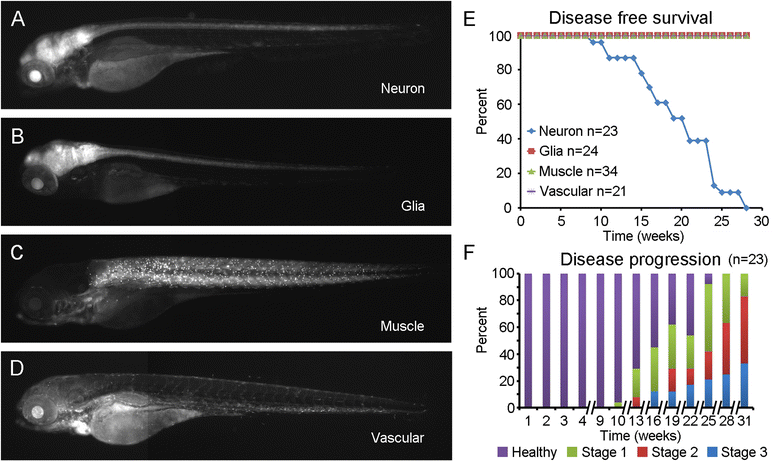Fig. 5
Neuron specific activation of mHTT-ΔN17-exon1 causes motor behavioral phenotype. a elavl3:cre (n = 23), b gfap:cre (n = 24), c mylpfa:cre (n = 34), and d etv2:cre (n = 21) transgenic lines were incrossed to mHTT-ΔN17-exon1 to activate the transgene specifically in neurons, glia, muscle, and vascular cell lineages respectively. GFP fluorescence in living embryos demonstrates the spatially restricted expression of each line at 5 days post fertilization. e A disease free survival curve demonstrating that only elavl3:cre/mHTT-ΔN17-exon1 fish develop a behavioral phenotype similar to ubiquitous activation of mHTT-ΔN17-exon1, p < 0.01, Kaplan Meier survival analysis. f Disease progression of elavl3:cre/mHTT-ΔN17-exon1 fish is similar to ubiquitious mHTT-ΔN17-exon1 fish although temporally delayed, note the discontinuous x-axis (n = 23). Behavioral Stages are described in Fig. 2.

